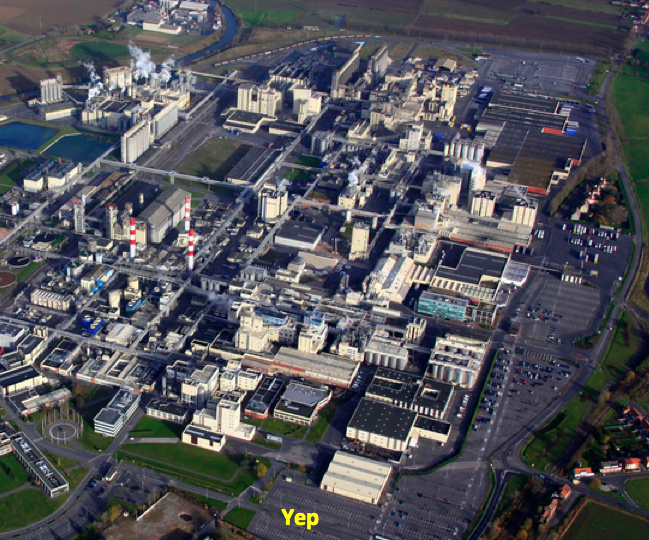This is exactly what we at ACSH deal with every day in different forms. There is more than a passing similarity to the very successful promotion of organic foods, dietary supplements, and "chemical-free" (fill in the bank). This is because certain industries and trade groups take full advantage of the usual (but nonetheless effective) scare tactics and slight of hand to scare people into buying their products because of cleverly staged, feel-good, anti-scientific dogma.
And it works very well. The food supplement industry is a complete house of cards, and while the organic food industry won't harm you (except for your wallet), they have managed to do a fine job in convincing you that non-organic foods sure will, science notwithstanding. Brilliant marketing by two huge industries, but inherently dishonest.
Now we have a group with a Stepford Wives-type name called the Healthy Building Network. They want to make sure that your house is safer. Sounds great! After all, who could possibly be against healthier buildings? What is their plan? To get you to replace old "toxic" chemicals used to make plastics soft with their chemicals to make plastic soft.
On one level it almost makes sense. Experienced chemist have a built in "eyeball toxicology" system. By looking at structures of a given chemical, we can often make a very good guess about its toxicity. It's not perfect, but after awhile you get it right much of the time.
So, me and my eyeball are going to go out on a limb and predict that the new plasticizers that companies are selling are most likely to be safe, although they haven't been evaluated for safety even remotely as thoroughly as the chemicals that have been used forever, principally diisononyl phthalate (DINP)—which is certainly safe.
At this point, I have no interest in debunking their claims about the "dreadful harm" that phthalates—chemicals that make PVC plastic pliable and soft—are supposed to cause. This has been done repeatedly and effectively. I will reference this at the end of the article.
Why? Because what is far more interesting to me, is that, when you scratch the surface of the Healthy Building Network, all is not as it seems.
It is fascinating to discover what they are not telling you, and why. Here is the essence of their marketing plan. They are trying to sell their new chemicals to the building industry instead of other companies selling the old ones. This is not $urprising.
Let's examine their first premise—while the synthetic chemicals used to build your home are synthesized (duh), the natural chemicals that the Healthy Building Network wants you to switch to are not. This is pure BS.
There are a number of "bio-based" plasticizers that the Healthy Building people are pushing. I'm going to focus on one of them—isosorbide diesters (aka Polysorb), since this seems to be the darling of the movement right now.
Yes—it is derived from natural sources, as opposed to "petroleum products"—something that they are quite fond of reminding us. Is this good, bad, or irrelevant? In terms of chemistry, despite widespread belief to the contrary, the answer is irrelevant. It makes NO difference how something is made. All that matters is the composition and purity of the final product.
There is no better example than vitamin C. It can be isolated directly from plants, or it can be manufactured starting with glucose which is chemically modified in a number of synthetic steps to give vitamin C.
Guess what? Virtually all the vitamin C you buy is prepared synthetically. Why? Because it is much cheaper, and gives you the exact same pills that you would swallow if your vitamin C was squeezed from oranges.
Yes, there are, poisonous chemicals are used in every step, in the synthetic process, including hydrochloric acid, bleach, potassium permanganate, and nickel. Does this matter? Not one bit. By the time the pill is in the bottle, all that stuff is long gone.
The parallel to "logic" behind the Healthy Building Network strategy is uncanny.
Here is how phthalates are made: Naphthalene, a component of crude oil (and we'll talk more about this later) is treated with chemical reagents to give phthalic acid. Phthalic acid is easily converted to DINP using another chemical.
Here is how Polysorb is made. Glucose is treated with a different set of chemical reagents to produce Polysorb. They are also gone by the time the synthesis is finished.
So, should you be laboring under the misconception that the new stuff is plucked freshly out of the ground and delivered to your eco-house by a horse-drawn wagon, you are a little off.

Below is the largest Polysorb facility in Europe—a plant in Lestrem, a town in Northern France. It is owned by the Roquette Company.

- Producing ethanol from corn requires too much farmland, which could be used to food
- Producing ethanol and other biofuels takes more energy than the fuel can generate.
- According to some authorities, producing enough biofuels to enable their widespread adoption could mean converting most of the world’s remaining forests and open spaces to farmland
- Government subsidies for corn-based ethanol production were $6 billion in 2010
- Depending on local irrigation requirements, it can take over 550 gallons of water to produce a single gallon of corn ethanol
- It takes approximately 36 gallons of water to produce enough corn ethanol to drive a standard car one mile.
MYTH #1—Endocrine disruption:
“Phthalates, the most commonly used plasticizers in PVC, are known endocrine disruptors – chemicals that interfere with hormone signaling, which is especially critical to early childhood development”
SCIENCE: Phthalates are not synthetic hormones, nor do they mimic estrogen or testosterone… While most of the phthalates in commerce are not associated with endocrine effects, a few phthalates have been found to interfere with normal sexual development resulting from reduced testosterone synthesis. This was found in male rodents at doses 2,000 times higher than those typically experienced by humans. This effect is not seen in primates. http://phthalates.americanchemistry.com/Research-Phthalates/Endocrine-Studies>
MORE SCIENCE: “DINP is not an endocrine disruptor as defined by the internationally accepted definitions for endocrine disruption (the Weybridge definition and the International Programme for Chemical Safety (IPCS) definition) and it is not an endocrine disruptor according to the criteria in the EU REACH guidance.[1]In other words, DINP is not responsible for any adverse effects mediated via the endocrine system in humans, animals, fish or other species.” http://www.dinp-facts.com/endocrine
MYTH #2— Carcinogenicity:
"many phthalates are known carcinogens and reproductive and developmental toxicants.”
SCIENCE: DINP was evaluated by California’s Carcinogen Identification Committee (CIC) which did not find DINP to be a human carcinogen. Studies to date have only found that it is carcinogenic to rats – specifically in Fischer (F-344) rats that are predisposed cancer.
MORE SCIENCE: In 2012, the Australian government review concluded, “MCL (Mononuclear Cell Leukemia [which is] observed in Fischer 344 rats is not regarded as relevant to humans.” (NICNAS, 2012, p. 49).
AND EVEN MORE: “DINP is not a chemical "known to cause cancer" under Proposition 65 because the overwhelming weight of scientific data shows that DINP is not a human carcinogen. It has been safely used for years. Numerous government scientific agencies and regulatory bodies worldwide have studied and reviewed the use of DINP, and none have concluded that it is a human carcinogen. OEHHA's listing of DINP under a statute intended to protect people from carcinogens was wrong, and violated its duties under the law.” <http://image.exct.net/lib/fe5e1570756c0c7d721d/m/1/2014-06-11+FINAL+HPP+statement+DINP+Prop+65.pdf>
MYTH #3 – Lack of sufficient research:
“This research brief… [it] compares what is known and unknown about these substances’ human health and environmental impacts, and compares them to known effects of a standard phthalate used in PVC building products, Diisononyl phthalate (DINP)."
SCIENCE: DINP is one of the most widely studied and used phthalates. DINP has been repeatedly studied and found that current risk estimates do not indicate a health risk. In fact, Australia’s National Industrial Chemicals Notification and Assessment Scheme (NICNAS)[2] determined that; “Current risk estimates do not indicate a health concern of children in DINP in toys and childcare articles even at the highest (reasonable worst –case) exposure scenario considered.”
MORE SCIENCE: There are no exposure data gaps when it comes to DINP and DIDP. The CPSC’s 2004 exposure data done by Babich, et al and the CDC’s biomonitoring data provides comprehensive exposure data.
MYTH #4 - Bioaccumulation:
This is a standard scare tactic, which is effective in making people believe that our bodies are accumulating poison little by little. Bioaccumulation is rare.
SCIENCE: Even The Healthy Building Network’s own review acknowledges that when it comes to bioaccumulation, there is no effect from DINP.




Comments